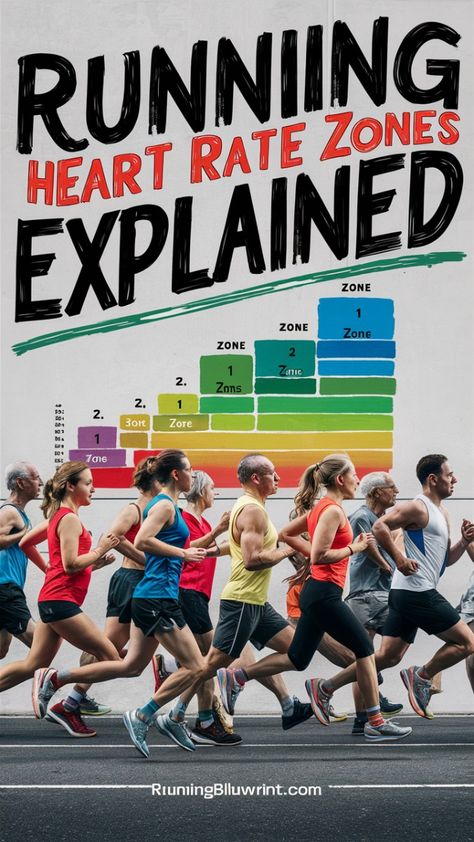If you’re reading this, you likely enjoy drinking alcohol, especially after a hard run.
And from the looks of it, why not. Alcohol is relaxing, calming, and a lot of fun.
Here the thing though.
Whether you run to stay fit or train for a race, it’s key to understand the impact that alcohol has on your performance, fitness, and overall health.
So, where does one draw the line?
Fret no more.
In today’s article, I’ll delve a little deeper into the effects of alcohol on running performance and recovery.
Sounds great?
Let’s get started.
What is Alcohol?
Whether you choose to have a beer, a glass of wine, or a shot of your favorite spirit—all of which contain alcohol, thus, have an effect on your body.
But first things first, let’s explain what alcohol actually is.
When people talk about alcohol, they usually refer to the substance found in beer, wine, and spirits.
More specifically, alcoholic drinks contain ethanol, which is a type of chemical substance produced by the fermentation of fruits, grains, and other sources of sugar.
The Production Process
To make alcohol, grains, vegetables, or fruits are put through a process called fermentation.
During this, bacteria or yeast react to the sugars in food, which, in turn, releases ethanol and carbon dioxide. This is why the longer the fermentation, the stronger the booze.
Stronger booze undergoes a process known as distillation, in which a portion of the water is pulled out, leaving a more potent concentration of alcohol and flavor with better aftermath.
The drink alcohol punch depends on how long it is left to ferment.
For example, vodka is produced from the sugar in potatoes, and wine is made from the sugar in grapes.
The Impact Of Alcohol
Alcohol is one of the most popular psychoactive substances in the world. It can influence both your physical and mental state.
When you drink alcohol, your liver will do most of the legwork to break down the booze into acidic acid.
Once the alcohol reaches your bloodstream through your stomach, it will find its way to virtually every organ in your body, especially your brain.
In there, alcohol impairs activity between your nerve cells and your brain’s pleasure pathways. This often will make you feel more relaxed, but it impacts consciousness, reduces inhibitions, compromises judgment.
I can go on and on, but if you have ever had more alcohol than you should, then you know what I’m talking about.
What’s more?
Keep in mind that alcohol has a varying effect on different people.
Your blood alcohol content, BAC, depends on your gender, size, and age.
Other variables that impact how booze affects our body include
- Emotional state
- Personality type
- Past experience and history with alcohol
- Diet habits and stomach content
- Present mood
- Environment
- Stress level
- And so much more
Is Alcohol A Drug
While it might not be the first thing to cross your mind, alcohol is actually a drug in the shape of a liquid. That’s why there is a term alcohol abuse, just drug abuse.
In essence, booze is a psychoactive, mind-altering substance that impacts the way we feel, think, and behave.
While drinking alcohol may make you feel relaxed, the stuff is actually a depressant drug that slows down—or depresses—several parts of your brain as well as your central nervous system.
This, in turn, hinders the delivery of messages traveling between your brain and body, which, impacts the way you think, feel, and behave—Engaging in running, operating machinery, or anything that requires motor functions is never a good idea under the influence.
How Much Alcohol In Your Drink
Not all alcoholic drinks are made equal—some are actually stronger—as in having a high concentration of alcohol—than others. Keep in mind that the virgin not always the loser when it comes to alcohol.
Different types of alcoholic drinks have various amounts of alcohol content.
As a matter of fact, the volume of the fluid in your can, glass, or bottle doesn’t inherently match the amount of alcohol in a specific drink.
For example, fermented drinks, such as beer and wine, may pack in from 2 percent to 20 percent alcohol. However, liquor, or distilled drinks, contain from 30 to 60 percent or more alcohol.
Here’s the general breakdown of alcohol content in common drinks
- Beer – 2 to 6% alcohol
- Cider – 4 to 8% alcohol
- Unfortified Wine – 10 to 16% alcohol
- Fortified wine — 15 to 25% alcohol
- Liqueurs – 15% alcohol
- Rum – 40% alcohol or more
- Brandy – 40% alcohol or more
- Tequila – 40 to 50 % alcohol or more
- Gin – 40 to 50 % alcohol
- Whiskey – 40 to 50 % alcohol
- Vodka – 40 to 50 % alcohol
The Good Side of Alcohol
As you can already tell, alcohol is not all bad—especially when consumed in moderation.
If you’re a light drinker and you take care of yourself, chances are you can keep on drinking alcohol as long as you do it responsibly—this means keeping your intake moderate.
But what moderate actually means?
According to the Mayo Clinic, moderate intake is anywhere up to two drinks for men and one drink for women.
In the US, the standard one drink packs in roughly 14 grams of pure alcohol, which can be found in
- 12 ounces of beer (355 milliliters)
- Five ounces of wine(148 milliliters)
- 5 ounces of distilled spirits. (44 milliliters)
Plenty of research has reported that keeping your alcohol intake moderate may offer health benefits.
For example, the American Heart Associating (AHA) reported that drinking a 5-ounce glass of wine every day may positively impact good (HDL) cholesterol levels.
Dehydration
One of the most detrimental effects of alcohol on exercise capacity comes down to dehydration.
Technically, alcohol is a diuretic.
This means the more alcohol you have, the more water is being released from your body through urination, which can lead to dehydration.
In fact, you can lose up to 3 percent of body weight in fluids within three to four hours of alcohol intake, which can be really problematic in the hot season.
Your kidneys are in charge of much water is allowed to stay in your body.
When these water levels exceed a specific amount, your kidneys begin eliminating the excess. This process is initiated by the brain through the release of Vasopressin, a hormone that signals the kidneys to stop dumping.
Therefore, your muscles will be receiving less oxygen and nutrients, so they’re going to get tired much faster.
What’s more?
When you’re in a dehydrated state, you’re prone to muscle cramps, strain, fatigue, and other issues.
Alcohol and Brain Function
One of the most dangerous side effects of excessive alcohol on your brain and nervous system function.
Liquor impairs your balance, motor skills, hand-eye coordination, and reaction time, decision making, which, in turn, compromises performance and increases injury risk.
What’s more?
Excessive drinking also increases your risk for accidental injury. A simple trip and fall may injure you so badly that you’ll have to stop training for days, even weeks, at a time.
Alcohol and Running Recovery
The main reason to avoid drinking too much alcohol boils down to its impact on your recovery
For starters, drinking in the evening, especially to excess, can negatively impact sleep. Proper sleep speeds up recovery, thus, essential to optimal athletic performance.
But since booze compromises sleep, your recovery will be slowed down.
More specifically, alcohol may affect your rapid eye movement sleep REM, which is the phase of sleep where most recovery happens.
During this stage, your immune system gets recharged so that could assist in muscle synthesis.
Secondly, long-term alcohol use may rob your body of the human growth hormone HGH, which is a chemical that plays a major role in repairing and building muscles.
In fact, research has reported that excessive boozing may decrease the secretion of the hormone by as much as 70 percent.
That’s really, really bad.
Your liver gets compromised, too.
The liver is a key detox organ that helps you recover from exercise as well as monitor blood flow.
Since excessive alcohol consumption increases blood flow, your liver will be busy regulating that instead of your body’s recovery.
That’s not the whole story when it comes to the impact of alcohol on your workout recovery.
Let’s dive a little bit deeper.
Additional resource – Can Running Help Cure Your Hangover?
Protein Synthesis and Muscle Growth
Having more shots than you should after a tough run can have terrible effects on muscle growth.
Not only does excessive intake affect your REM sleep and growth hormones, but it also hinders protein synthesis, the process by which amino acids are fused together to form complete proteins. This, in turn, decreases muscle growth.
Even occasional drinking may affect muscles in some individuals, research shows.
Don’t take my word for it.
According to research out of the American Journal of Physiology, Long-term alcohol use was linked to a decrease in muscle weight and lean body mass. The reason behind this boils down to the impact that alcohol has on the proteins that are in charge of muscle growth.

Alcohol and Nutrition
Alcohol itself contains little to no nutrients and minerals and thus not offering much in terms of nutritional value.
In fact, alcohol can go as far as to act as an ‘anti-nutrient.
Let me explain.
Alcohol also impacts your diet and how your body processes and absorbs nutrients. It impairs the normal metabolism of nutrients, vitamins, minerals, and primary fuel substances in several ways.
Some of which include:
- Limiting nutrient absorption by damaging the cells lining in the stomach and digestive tract
- Reducing the production of digestive enzymes from the pancreas
- Impairing the transfer of some nutrients into the blood
- Harming the body’s microbiome
- Limiting the conversion of B Vitamins, which are key in generating energy from carbs, protein, and fat.
- Impairing liver function, which in turn interferes with normal metabolism and storage of nutrients
Alcohol & Food Cravings
If you’re trying to stay healthy, you’ll want to keep your blood sugar levels stable.
However, drink more than you should, and it will impact your blood sugar level is affected. This will trigger cravings for junk food.
What’s more?
Alcohol also may trigger the release of galanin, which is a brain chemical believed to cause cravings in foods that are rich in fats.
Again, science backs this up.
According to research out of the American Journal of Clinical Nutrition, participants tend to overeat when consuming a high-fat meal and wash it down with alcoholic beverages.
That’s why if you tend to drink too much, you’re likely burning your candle at both ends—not only that you are not consuming enough nutrients, but the nutrients you do consume are not utilized well.
Alcohol and Weight Gain
I hate to sound like a broken record, but alcoholic drinks pack in lots of calories but offer little to no nutritional benefits. In fact, alcohol has seven calories per gram.
And all of these extra calories get stored in your body as fat, usually accumulating around the stomach area. After all, that’s why they call it beer belly.
Again, the easiest way to prevent weight gain related to drinking is to actually cut down on your alcohol intake and undoubtedly not rely on burning extra calories from alcohol through logging in more miles.
You cannot outrun a crappy diet, no matter of fast/long you go.
Alcohol and Injury
Last but not least, alcohol may compromise your body’s ability to recover from soreness or injury.
Alcohol is a blood vessel dilator. It, basically, causes your blood vessels to dilate and to transfer more blood to the injured area.
When you feel sore or injured, you’re supposed to ice the injured area to soothe swelling/pain and constrict the blood vessels.
Alcohol reverses this process by increasing increase blood flow to the affected region, therefore, increasing the amount of time it takes for an injury to heal.
Not only that, but booze also increases the risk of bleeding and swelling around soft tissue injuries, making the recovery period longer.
These include
- Muscles injury
- Bruises
- Sprains
- Inflammation
- Cuts
The reason?
It is believed that alcohol increases endocrine stress responses, which limits blood coagulation and prevents complete healing.
Research conducted at the National Institute of Public health confirms these findings as researchers have reported that excessive drinking negatively impacts the post-surgical healing process.
In other words, alcohol and injury are a bad combination.
What’s more?
To make things worse, alcohol may mask pain which may lead you to postpone treatment since it masks pain symptoms.
Pain serves a good function—it tells us that something is wrong. When you don’t feel it, chances are you won’t take care of your injury. This not only prolongs your healing time but may also cause further injury. And you don’t want that.
How Much Should You Drink?
Don’t get me wrong.
I’m not trying to dissuade against drinking alcohol in today’s post.
As a matter of fact, you shouldn’t completely abstain from booze to live a healthy life, but you should also pay attention to the possible downsides of excessive drinking.
As previously stated, moderate intake of the stuff is actually good. In fact, it’s ok to have a few drinks every here and there—as long as you have things under control.
So How Much is Too Much?
This a tricky question to answer.
But, based on the guideline I shared before, if you had more than one drink—in 12 ounces (355 ml) of beer, five ounces (148 ml) of wine, and 1.5 ounces (44ml) of spirits, know that you’re on your way to having more than you should.
And consequently, your running will suffer.
What’s more?
If you’re serious about performing your best before a hard session or race, then avoid drinking altogether at least the 24 hours before.
If you can’t do without the drink, then at the very least limit yourself to one or two and chase it with enough water to offset any negative impact.
What’s more?
Spread out your alcoholic drinks and drink plenty of water between each drink.
All in all, I’d recommend limiting your weekly drinking to around 14 to 16 units per week.
Running And Hangovers
Technically, hangovers are the by-product of alcohol toxicity and the impact of byproducts of fermentation called congeners that are found in most alcoholic drinks.
Here’s the truth:
A hangover will impact your running performance.
Even mild hangover symptoms, such as hypersensitivity to outside stimuli and headache, may impair your body’s ability to perform at its best.
But should you or should you not?
Again, it depends on how serious of a hangover you’re dealing with.
If it’s just a mild hangover without unbearable pain, running will be fine.
But, if you’re suffering from a serious hangover, you might also be dehydrated, which would make running a bad idea.
When you experience a hangover, you likely have felt symptoms such as :
- Soreness
- Nausea
- Headaches
- Depression
- Fatigue
I hate to sound like a broken record, but research, yet again, has found that these symptoms may decrease athletic performance and have been known to lower aerobic power by as much as 11 percent.
That’s quite a lot.
So, if you have a stubborn hangover, you’re better off not running as it can increase your injury risk and further dehydrate you.
Instead, on a morning of a hangover, focus on drinking plenty of water and consuming enough nutrients before make up your mind to go out for a run.
Conclusion
Alcohol is widely consumed around the globe by the general population—runners are no exception.
Although as a runner, you should pay special attention to the impact that alcohol has on your recovery and performance, moderate intake poses less risk than heavier drinking. So stay moderate.
Please feel free to leave your comments and questions in the section below.
In the meantime, thank you for dropping by.
Keep running strong
David D.
 Steps In One Mile Running
Steps In One Mile Running






















